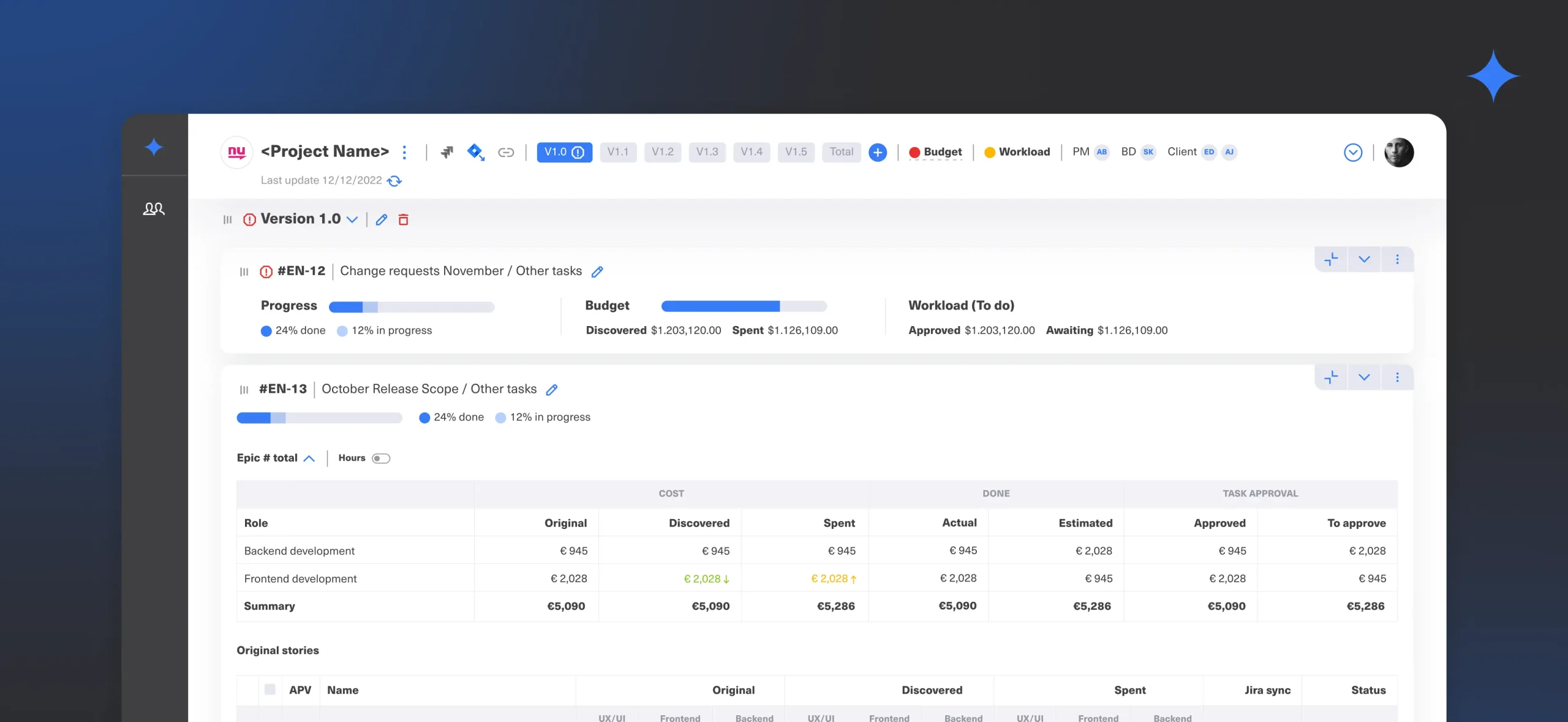
ODAS: Scalable SaaS Management Solution from ground up
Product Designer
UX Design
UI Design
Figma
FigJam

Jira

Miro
ODAS is a SaaS platform developed by Enkonix, built to streamline business operations through automated data management and workflow optimization. ODAS helps businesses streamline project management, track budgets, and make real-time decisions with clarity and confidence. But ODAS didn’t just came out of nowhere — it had to be designed, structured, and brought to life.
Big projects, big decisions, and even bigger budgets. When you’re managing a growing SaaS product, you need more than just “progress updates”—you need full control.
As the Senior Product Designer, I was responsible for designing ODAS system from the ground up, ensuring that every flow, screen, interaction, and every functionality made sense for users while aligning with the strategic vision of the CEO, CTO, and PM.
📊 Full budget transparency
Clients see how much is spent, where it went, and what’s left — no surprises, no hidden costs.
⏳ Smarter feature management
Clients can postpone, approve, or adjust scope in real-time, making every decision data-driven.
🔍 A clear project roadmap
From high-level epics to individual stories—clients track progress, priorities, and next steps at a glance.
🔍 The Challenge: A SaaS Platform Without Transparency
Imagine this: You’re a client investing in a product’s development, but you have no clear way to track progress, approve budgets, or decide what features to prioritize next.
That’s where ODAS was before. The information existed—but it was scattered, hard to access, and lacked a structured decision-making flow.
Clients needed to:
🔹 See their budget at a glance—how much has been spent, what’s left, and where the money went.
🔹 Decide in real time—postpone, approve, or adjust scope based on actual progress.
🔹 Track feature development—what’s planned, what’s in progress, what’s next.
Without a clear, structured interface, managing projects felt more like guesswork than strategic decision-making.
💡 The Solution: A Product Designed for Control & Clarity
I designed a system where clients don’t just observe—they actively manage development.
✅ A structured, intuitive interface → No more endless email threads. Every update, every decision—right where it needs to be.
✅ Budget tracking in real time → Clients see exactly how funds are allocated, spent, and adjusted as development progresses.
✅ Feature prioritization tools → Every epic, every story—visible, trackable, and adjustable before committing to the next sprint.
✅ Decision-making workflows → Clients can accept budgets, request changes, postpone features, compare scope changes, and review invoices—all in one place.
ODAS went from a complex, scattered system to a clear, structured platform where clients are in full control.
🎨 From Concept to UI: The Design Process
Designing ODAS wasn’t just about making things look good—it was about structuring the experience so users could navigate the system effortlessly. Here’s how key workflows were designed for clarity, security, and efficiency.
🔐 Secure Sign-In & Role Selection
Unlike standard SaaS platforms, ODAS required strict access control. Users couldn’t just “sign up”—they had to be invited, ensuring security compliance. The role-based login system ensured that users only saw the data and actions relevant to them.
📌 Why? Security was a top priority, and uncontrolled registrations could compromise sensitive project data.
👥 User Management: Adding the Right People to the Right Teams
ODAS allowed administrators to add, remove, and manage user roles seamlessly.
✅ Multi-role support – Users could be assigned different roles per project.
✅ Permission-based access – Certain actions (budget approvals, scope changes) were restricted to specific roles.
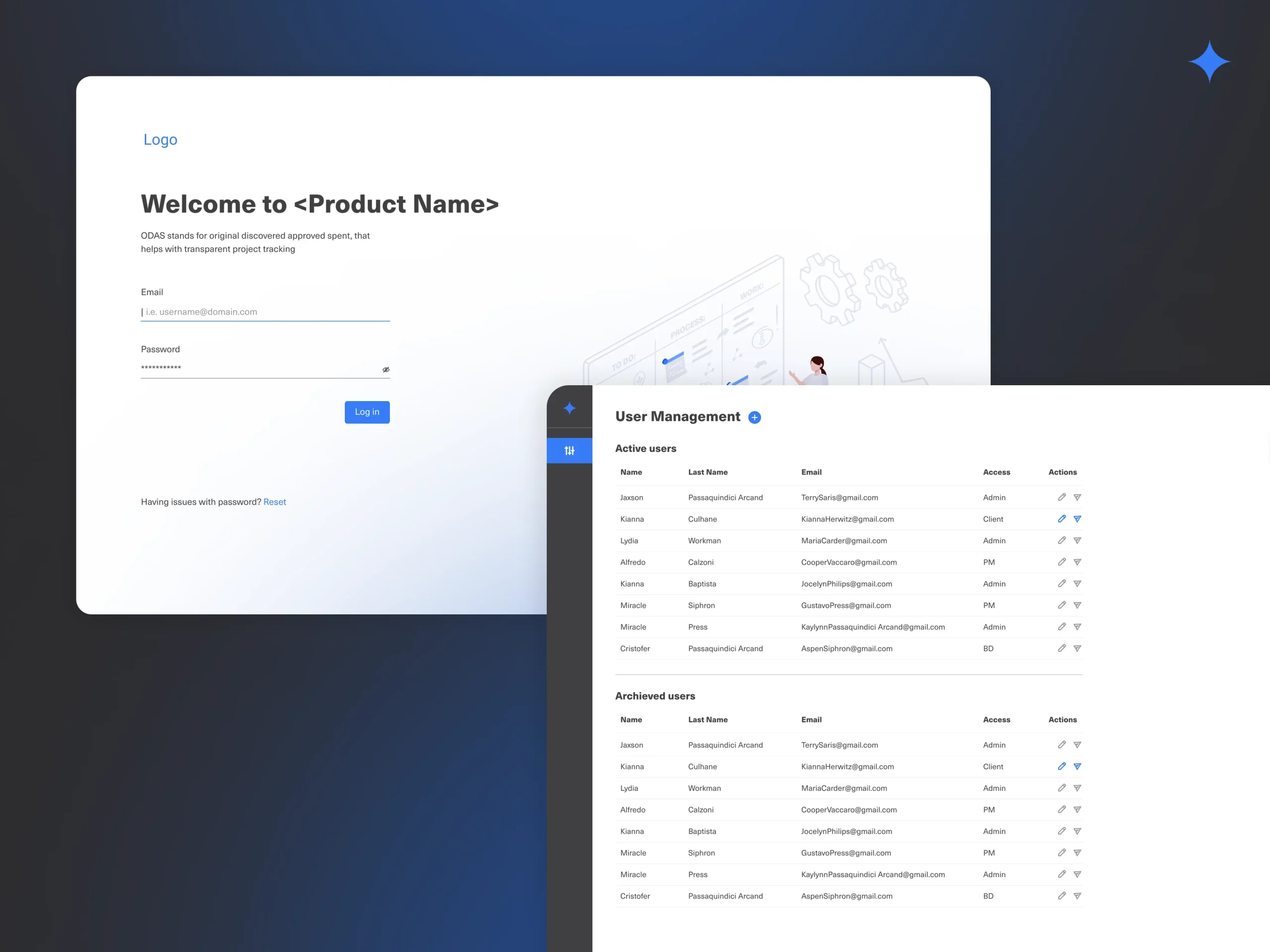
📌 Why? Managing multiple stakeholders—developers, project managers, and clients—meant ensuring the right people had the right level of access.
Budget & release data is highly sensitive and must remain private. By implementing both a secured site and an invite-only access system, we significantly reduce scam attempts and protect critical project data.
📂 Project Creation & Management
A streamlined flow for creating and structuring projects was essential. From naming the project to assigning teams and setting initial scopes—everything was designed for speed and clarity.
✅ Step-by-step project setup – No unnecessary complexity, just a structured way to launch a project.
✅ Customizable project settings – Teams could configure priorities, workflows, and sprint structures from the start.
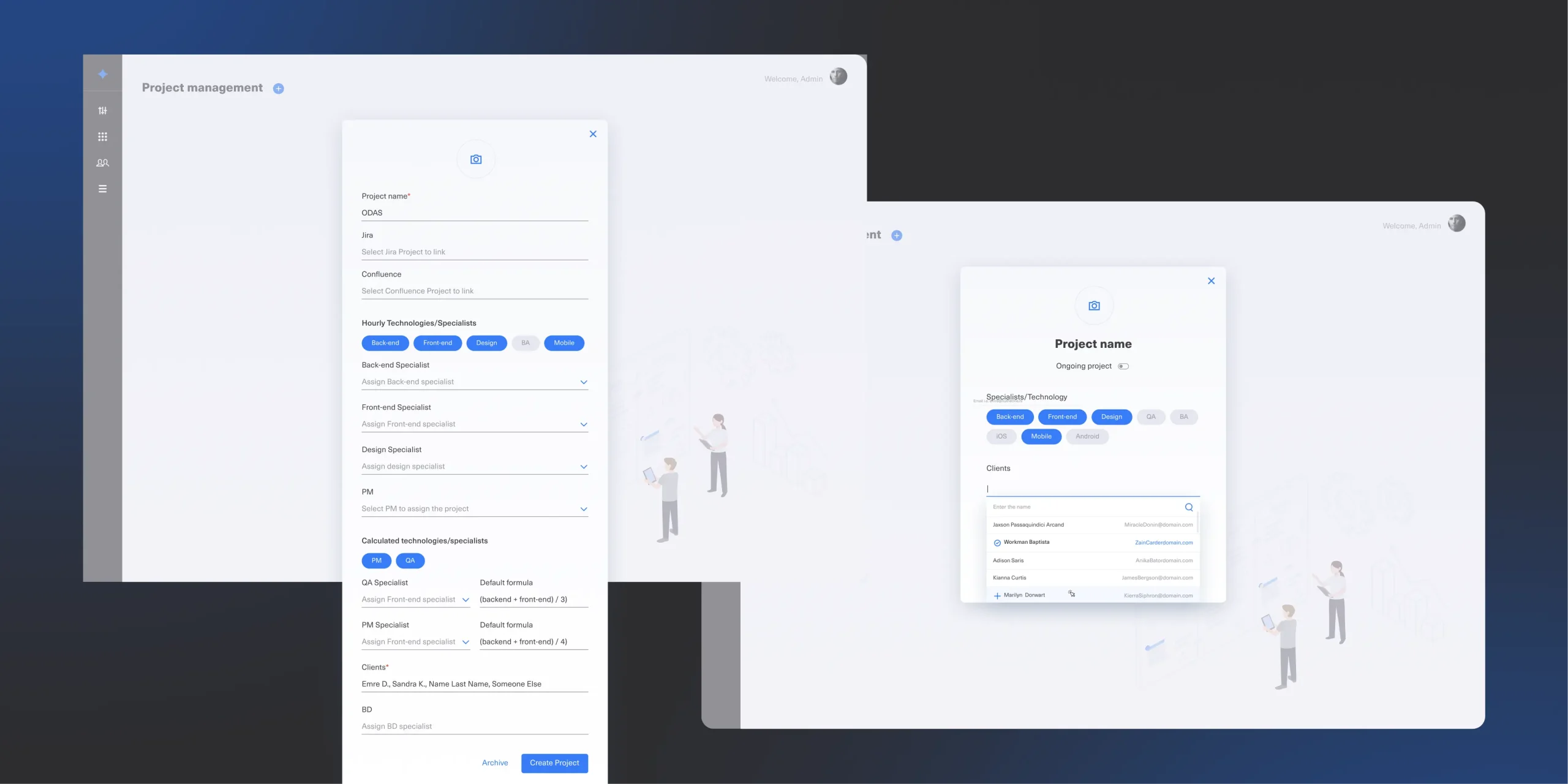
📌 Why? Teams needed a flexible yet intuitive way to kick off new projects without friction.
This approach ensures that the client is not only aware of the roles in the project but also knows the team members by name, making collaboration more personal. Plus, the data syncs with Jira, keeping everything transparent—so it’s clear who owns what and who needs to take action. And it works both ways—removing unnecessary back-and-forth and keeping development smooth.
🖥️ Epics & Feature Management
Epics weren’t just static lists—they were interactive control hubs where users could:
🔹 Track progress for each story in real time.
🔹 Request changes, approve features, or postpone them for later releases.
🔹 Compare original scope vs. discovered scope to make informed decisions.
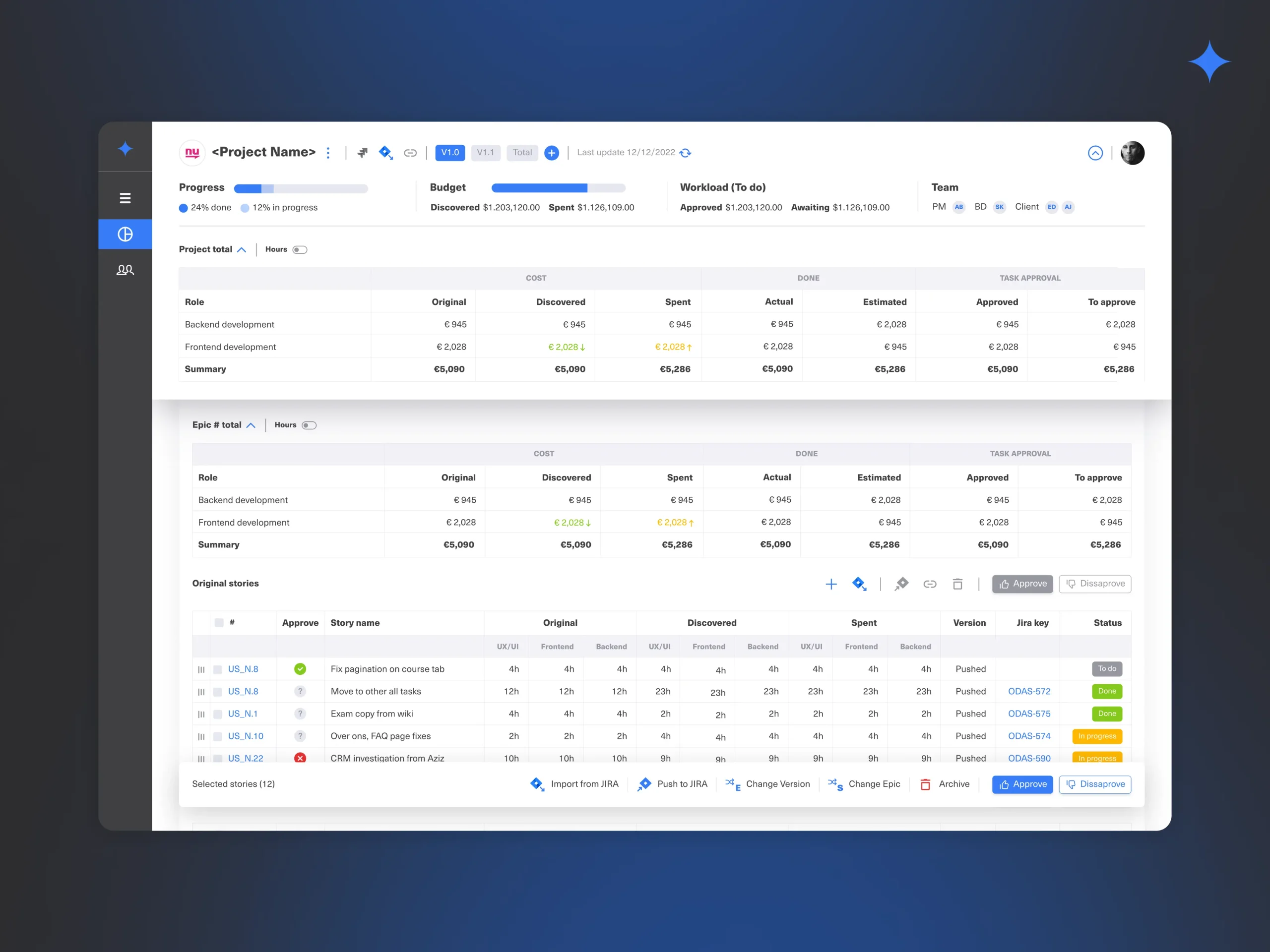
📌 Why? Instead of drowning in feature lists, ODAS made project tracking visual, structured, and actionable.
The main goal of full Jira synchronization was to provide clients with the necessary data without overwhelming them. At the same time, it ensures that PMs don’t get lost between systems—they can easily track progress, anticipate risks, and manage upcoming challenges before they become roadblocks. Epics functionality is so seamless and intuitive that project management is now a joy for both PMs and clients, replacing endless budget-related calls with full transparency. Finally, they can focus on what truly matters—the product, not the bureaucracy.
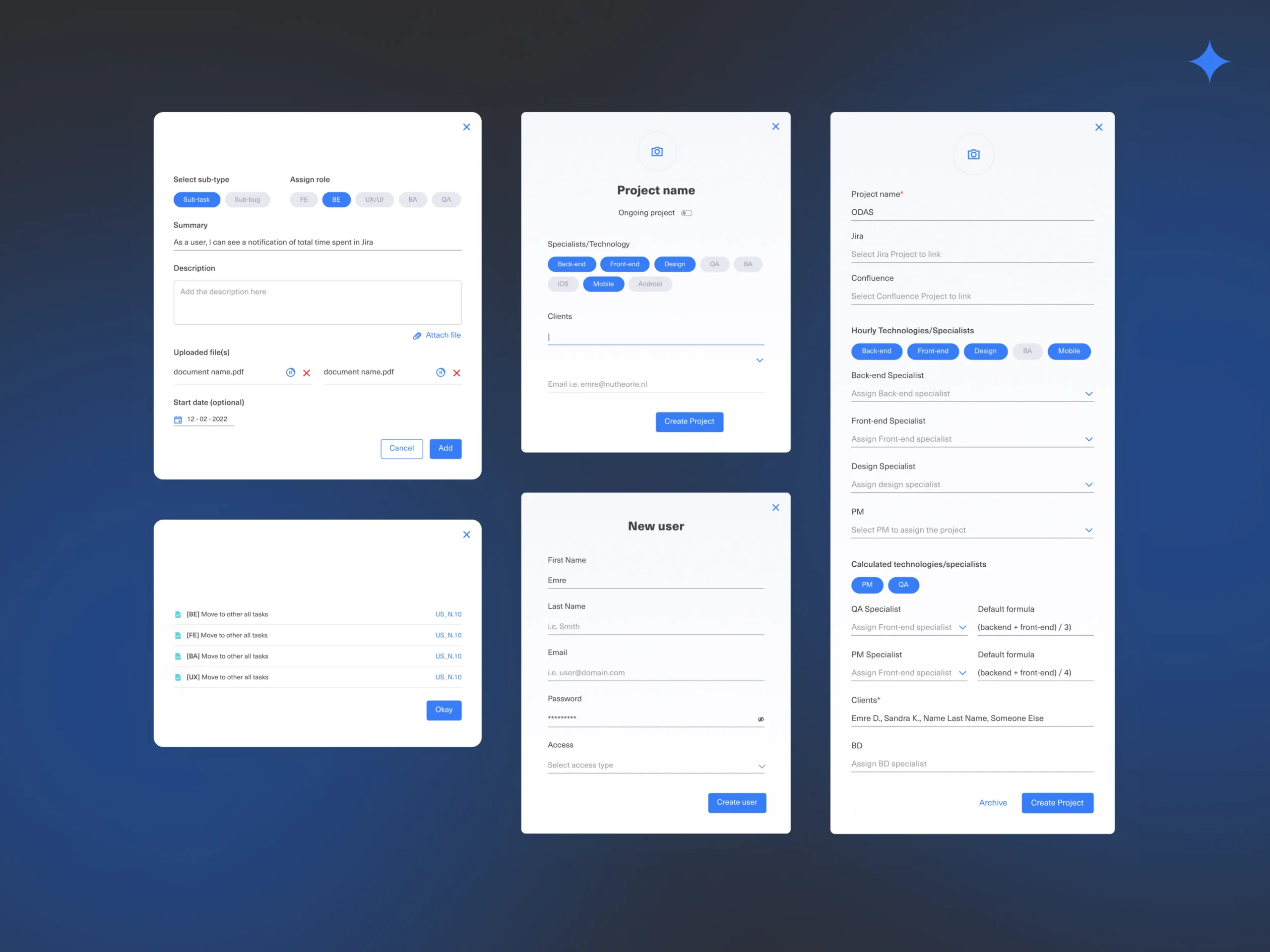
Achievements & Takeaways
Designing ODAS from scratch was more than just creating UI—it was about building a structured, scalable system that put control into the hands of both the development team and the paying client.
This project gave me:
Full ownership of product design – From UX flows to high-fidelity UI, every decision shaped how ODAS operates today.
Deep collaboration with leadership & engineering – Working closely with the CEO, CTO, PM, and developers ensured that design wasn’t just “pretty” but improved workflows.
Security-first UX thinking – Designing for controlled access, permission-based roles, and secure workflows added a new layer of complexity to product design.
Impact-driven design – Every screen was crafted not just for usability, but to help clients make informed business decisions in real time.
🔥 ODAS isn’t just a product—it’s a decision-making engine that puts control exactly where it belongs: in the hands of the people who drive projects forward.
